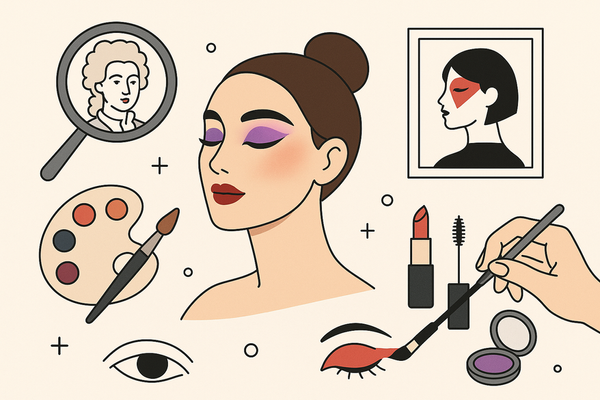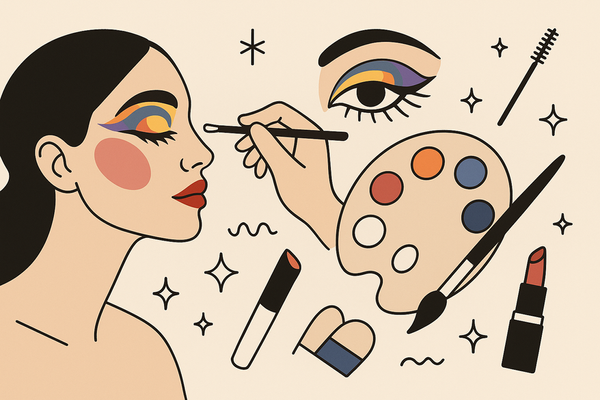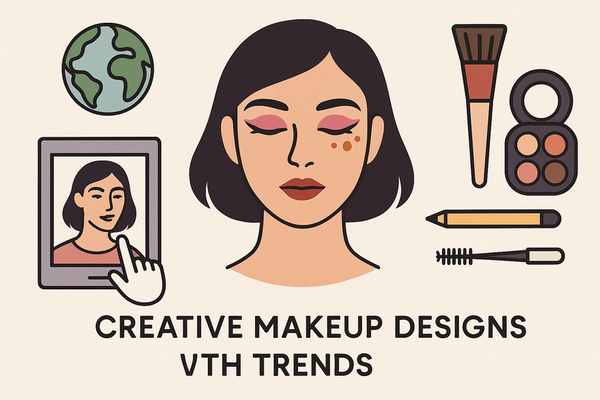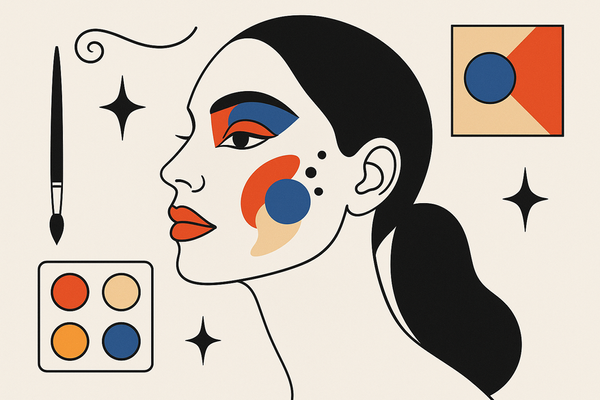Mastering Creative Makeup Designs: Trends, Techniques, and Tips
Discover the artistry of creative makeup designs with trending techniques and tips to elevate your skills and express individuality.
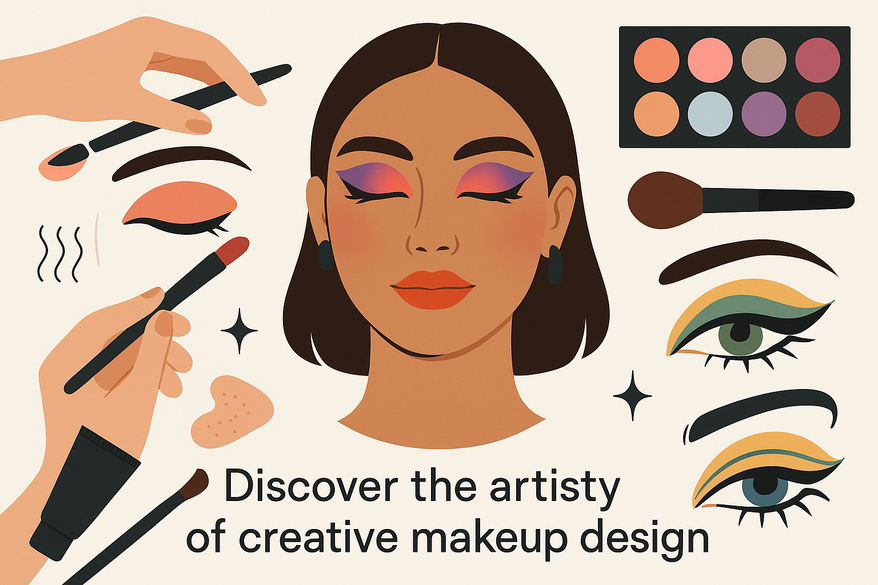
Estimated reading time: 5 minutes
Key Takeaways
- Creative makeup treats the face and body as an art canvas, blending bold colors, textures, and narratives.
- Core techniques include color blending, graphic lining, texture layering, prosthetics, and airbrush methods.
- Current trends range from neon UV festival looks and architectural avant-garde to AI-driven generative patterns.
- A practical tutorial covers skin prep, design sketching, color application, texture play, and setting tips.
- Overcome common challenges—uneven texture and caking—through patience, hygiene, and gradual skill-building.
Table of Contents
- Introduction
- Understanding Creative Makeup Designs
- Elements and Techniques of Creative Makeup Designs
- Inspiration and Trends in Creative Makeup Designs
- Practical Application: Step-by-Step Mini-Tutorial
- Challenges and How to Overcome Them
- Conclusion
- FAQ
Introduction
Creative makeup designs are an artistic form of cosmetic application that treats the face and body as a canvas. They transcend traditional beauty enhancement by using bold colors, textures, and narrative-driven looks. This innovative discipline blends fine art, theatrical expression, and avant-garde aesthetics.
Innovation in makeup is celebrated because it pushes the boundaries of self-expression and individuality. Artists use bright pigments, layered finishes, and conceptual themes to craft looks that tell a story or evoke emotion.
In this post, we'll explore historical evolution, key pioneers, essential methods, inspiration sources, a step-by-step tutorial, common challenges, and solutions.
For a seamless, tech-powered approach to exploring color palettes and testing avant-garde looks, Makeup Check AI offers instant design generation and personalized feedback to refine your artistry.
Understanding Creative Makeup Designs
Historical Evolution
- Theatre and Stage Roots: Early makeup artists used heavy pigments and exaggerated lines to project characters under bright lights.
- Runway Wearable Art: High-fashion shows adopted avant-garde face art, turning models into living sculptures.
Key Pioneers
- Pat McGrath: Revolutionized editorial makeup with bold color-blocking and metallic accents.
- Isamaya Ffrench: Blends sculptural techniques and fine-art principles in commercial and editorial work.
Distinction from Conventional Makeup
Conventional makeup focuses on subtlety, symmetry, and natural enhancement, while creative makeup emphasizes conceptual narratives, inventive color use, theatricality, and storytelling.
Elements and Techniques of Creative Makeup Designs
Creative makeup relies on core methods that build dynamic, multi-dimensional looks. Below are key elements and hands-on techniques.
- Color Blending
Definition: Crafting seamless gradients from matte to metallic finishes for depth and movement.
Technique: Use dense synthetic brushes for strong pigment payoff, then switch to soft blending brushes to diffuse edges. - Graphic Lining
Definition: Drawing precise geometric shapes, like floating cut-creases and bold stripes.
Tools: Ultra-fine liquid liner or an angled brush paired with gel liner for crisp lines. - Texture Layering
Definition: Combining matte, glossy, and glitter textures in overlapping patterns to create dimension.
Method:- Apply a matte eyeshadow base.
- Press a glossy medium onto select areas with a fingertip.
- Finish with pressed glitter using a flat synthetic brush for sparkle.
- Prosthetics & Materials
Materials: Lightweight clay prosthetics, feathers, faux flowers.
Application: Adhere with skin-safe adhesive, seal edges lightly with translucent powder for a seamless blend. - Special Effects
Airbrush Techniques: Achieve smooth color gradients and invisible coverage (airbrush makeup machine guide).
Equipment Tip: Use a 0.2-mm nozzle for fine detailing around eyes and lips.
Experimentation Tips: Integrate unconventional materials such as tape, foil, or digital projection mapping; balance bold mattes with reflective highlights; build dimension with thin layers to avoid caking.
Inspiration and Trends in Creative Makeup Designs
Industry Examples
- Pat McGrath: Known for metallic color blocks on runway models during major fashion weeks.
- MiMi Choi: Creates surreal optical illusions—think melting faces and three-dimensional tears.
Current Trends
- UV Festival Looks: Neon pigments that glow under blacklight, popular at music festivals.
- Avant-Garde Editorial Styles: Asymmetric shapes and architectural forms reminiscent of modern sculpture. See more on avant-garde and AI designs here.
- AI-Driven Designs: Generative art patterns projected onto the face, blending tech and beauty.
Where to Find Inspiration
- TikTok Challenges: Search #CreativeMakeupDesigns for daily prompts and tutorials.
- Instagram Portfolios: Follow @patmcgrathreal, @mimichoi.art, and emerging artists for fresh ideas.
- YouTube Tutorials: Watch creators like Alex Faction and Euphoria-style channels for step-by-step demos.
Practical Application: Step-by-Step Mini-Tutorial
- Prepare the Skin
Cleanse, moisturize, and prime with silicone-based primer for a smooth surface and longevity. - Outline the Design
Sketch shapes lightly with a nude eyeliner or face-chart pencil on brows, cheekbones, and temples. - Apply Color
Use flat synthetic brushes for base colors; fluffy brushes for blending. - Add Graphic Elements
Create cut-creases or floating shapes using an ultra-fine liquid liner. - Play with Texture
Mix loose pigment with a medium for tackiness, then press glitter or foil onto targeted areas. - Detail and Set
Refine edges with concealer and seal with a strong-hold setting spray from 10 inches away.
Recommended Tools & Products: Mehron Paradise Cream Palettes; NYX Epic Ink Liner; cosmetic-grade glitter; silicone beauty sponges; Urban Decay All Nighter Setting Spray.
Challenges and How to Overcome Them
Common Beginner Issues
- Uneven Texture: Patches or rough edges.
- Product Overload: Caking from too many layers.
Solutions
- Practice Patience: Allow each layer to dry; apply thin, gradual layers.
- Maintain Hygiene: Clean brushes between colors to avoid muddiness and breakouts.
- Scale Up Gradually: Start simple before attempting intricate details or prosthetics.
Conclusion
Creative makeup designs have evolved from theatrical roots to high-fashion and digital arenas. We defined this art form, traced its history, explored key techniques, and spotlighted trends and inspirations.
Experimentation, patience, and the right tools are essential for developing your own inventive face art. Share your transformation—tag your posts with #CreativeMakeupDesigns and join the community. Ask questions or post your looks in the comments below; we’d love to see your creations!
Ready to elevate your artistry with AI-powered tools? Try AI Makeup Generator for personalized design and instant feedback.
FAQ
- What is creative makeup design?
A style of cosmetic art that uses the face and body as a canvas for bold, conceptual looks combining color, texture, and storytelling. - What tools do I need to start avant-garde makeup?
Begin with synthetic brushes, pigmented palettes, a fine liquid liner, cosmetic-grade glitter, and a quality setting spray. - How can I prevent caking and uneven texture?
Apply products in thin, gradual layers, allow each layer to dry, and clean brushes between uses to maintain smooth application. - Where can I find inspiration for my designs?
Explore TikTok (#CreativeMakeupDesigns), Instagram portfolios of artists like Pat McGrath and MiMi Choi, and YouTube tutorials from makeup creators.

